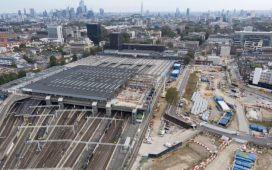Stay informed with free updates
Simply sign up to the Chinese economy myFT Digest — delivered directly to your inbox.
China’s industrial production grew at the slowest rate in four months in July, adding to signs of a weak start to the third quarter as a deep property slowdown weighed on the world’s second-largest economy.
Industrial production rose 5.1 per cent year on year in July, official data from the National Bureau of Statistics showed on Thursday, slightly missing a 5.2 per cent increase forecast by economists polled by Bloomberg, and 5.3 per cent growth the previous month.
Unemployment was 5.2 per cent in July, in line with analysts’ forecasts and a rise from 5 per cent in June and the first increase in unemployment since February.
President Xi Jinping has focused on industry, particularly in the high-tech manufacturing sector, to bolster China’s economy as a three-year property slump has hit household consumption and undermined investor confidence.
The government has announced incremental measures to try to stabilise the housing market and rekindle household demand, but has held back from bazooka-style stimulus.
The data release for July followed other signs of weakness, including soft factory activity and exports, while bank loans to the real economy declined for the first time since 2005.
“China’s July activity data pointed to a weak start to Q3,” Goldman Sachs analysts wrote in a note. They said they expected more easing measures in the coming months as the government tried to secure its economic growth target for the full year of 5 per cent, but added: “It may take time for the policy effect to kick in.” Gross domestic product growth was 4.7 per cent in the June quarter, missing expectations.
The NBS said the economy was “stable and made progress” in July, but added there were increasing “negative impacts . . . from changes in the external environment” and conceded that domestic demand was “still lacking”.
“The economy’s continued recovery and improvement still faces many difficulties and challenges,” the NBS said.
Retail sales added 2.7 per cent in July, slightly stronger than analysts’ expectations of a 2.6 per cent rise and exceeding June’s increase of 2 per cent. But the data release revealed that policymakers have to date not resolved the problem of China’s two-track economy, with strong exports and manufacturing contrasting with weaker household demand.
“The transition between old and new growth drivers is experiencing some pains,” the NBS said.
New house prices dropped 4.2 per cent year on year in China’s largest cities, while secondhand houses dropped 8.8 per cent, the NBS said.
Fixed asset investment was “probably the biggest disappointment” of the data, according to ING, rising 3.6 per cent in January-July, lower than a Bloomberg analyst forecast of 3.9 per cent and the January-June figure of 3.9 per cent.
The NBS did not provide a figure for July but analysts estimated it grew 1.9 per cent year on year, down from 3.7 per cent a month earlier.
Manufacturing investment grew strongly, although Nomura analysts pointed out there was a pullback in some “green” sectors that have suffered overcapacity.
But overall, the figure was dragged down by a decline in property investment and weaker than expected private sector and government investment, another negative sign for domestic demand, analysts said.
Goldman Sachs said it expected the government to announce more housing easing measures in the coming months, “including more relaxation of home purchase restrictions in top-tier cities and further reduction in mortgage interest rates”. But it said weak demand in smaller cities and among private developers meant that these would lead to an “L-shaped”, or very slow, recovery.
The dire state of the property market contributed to a warning from the world’s biggest steelmaker, China Baowu Steel Group, this week that producers were facing their worst downturn since devastating slumps in 2008 and 2015.
The NBS said steel production volumes fell 4 per cent year on year in July, while cement output declined 12.4 per cent.











